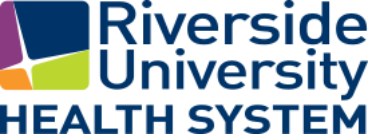Whole Person Health Score
Friday, July 29, 2022
Riverside County doctors, scholars publish in prestigious medical journal
New England Journal of Medicine publication highlights innovative health scoring tool created by Riverside University Health System team
A team of Riverside University Health System doctors and scholars that developed an innovative assessment to help providers and patients improve health outcomes was recognized recently in a national medical journal.
The article, which was published in the August edition of New England Journal of Medicine’s Catalyst Innovations in Care Delivery, describes a nationally recognized screening tool that has been used for six years by Riverside University Health System.
The team created the 28-question assessment known as the Whole Person Health Score to better understand and improve patients’ quality of life. The assessment now is used in Riverside University Health System clinics and a local school district. The tool has helped doctors and patients work together to take a more thorough look at all the factors affecting a patient’s health such as social support systems and financial stress.
Patients who complete the Whole Person Health Score show higher levels of engagement and improved satisfaction compared to non-assessed patients. The Whole Person Health Score also helps clinical staff identify patients who might need additional services, such as dietary and behavioral health services.
“In just a few years, we’ve heard from patients who say they feel that their healthcare providers really care about their well-being. These patients are getting better, more holistic care that will greatly improve their overall health,” said Dr. Geoffrey Leung, Riverside County Public Health Officer and co-author of the article.
In May 2022, the most recent month for which data was available, patients who received the Whole Person Health Score assessment had about a 1 percent no-show rate for follow-up appointments. Patients who did not receive the assessment failed to keep their subsequent appointments about 19 percent of the time, demonstrating that the assessment improves patient engagement significantly.
Doctors report similar benefits from using the tool.
“After I started using the Whole Person Health Score, I realized that there had been a gap between what I thought was important in the patient’s life versus what the patient thought was important. To have a true partnership with someone else, you need to ask them for their opinion, and the Whole Person Health Score allows us to do just that,” said Dr. Mahbuba Khan, medical director of operations at the RUHS - Community Health Centers and co-author of the article.
The Whole Person Health Score has been in use in Riverside County since 2016. Staff at RUHS medical clinics began providing the assessment to patients with diabetes, initially. Since then, its usage has broadened, and RUHS plans to expand it universally to all patients seen in its health system.
The score measures a patient’s health in six dimensions:
- Physical Health (considers factors like blood pressure and body mass index);
- Emotional Health (considers factors like mental health conditions and social support);
- Resource Utilization (considers factors like how often someone sees their doctor or takes medication);
- Socioeconomics (considers factors like finances, housing and food access);
- Ownership / Activation (considers factors like self-management and self-efficiency;
- Nutrition / Lifestyle (considers factors like diet, physical activity levels and substance use);
Answers to each question are weighed and converted into a final score that can be tracked as the patient and their healthcare team work together to improve the patient’s overall score.
To see Dr. Leung speak more about the Whole Person Health Score, visit https://youtu.be/ykZvI3BBv08. To read the article in NEJM Catalyst, visit https://catalyst.nejm.org/doi/full/10.1056/CAT.22.0096. The article is available by subscription only. The New England Journal of Medicine is the nation’s oldest continuously published medical journal.
RUHS provides exceptional healthcare to residents throughout the county, with a focus on serving those who are uninsured, underinsured and underserved. RUHS – Medical Center clinics saw more than 75,000 visits last fiscal year, while RUHS – Community Health Centers had almost 260,000 visits.
